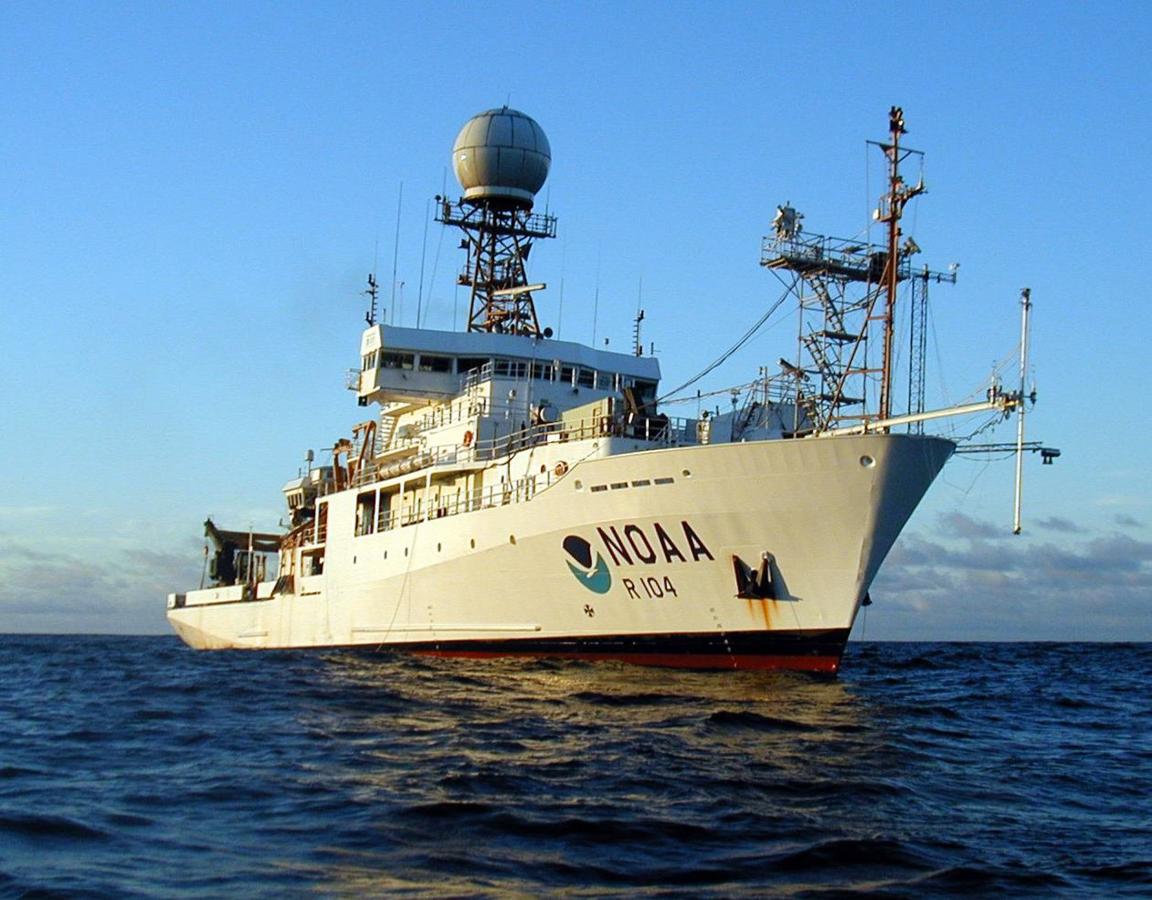
Nautical charts that help keep mariners safe. Data to inform commercial and recreational fishing. Never before seen species found deep in the ocean. Ensuring safe shipping routes so ports can reopen following a storm.
These are just some of the important products that would not be possible without the ships used by NOAA scientists, experts, and partners. NOAA Marine and Aviation Operations currently maintains a fleet of 15 research and survey ships used for various scientific research efforts. These ships are homeported around the country and are operated by a combination of NOAA Commissioned Corps officers and civilian professional mariners.
The ships–and the officers and crew on board–provide mission support to scientists from various NOAA offices, as well as the academic community. That’s why one of the priorities for NOAA is to ensure that our ships are in peak working condition and can meet the agency’s needs.
As of 2023, the average age of the ships in our fleet is 30 years old. By 2030, six of those ships will likely reach the end of their service life–the operational period of a ship. Therefore, it is even more important that we take steps to prepare for that situation. That means: continuing to take care of what we have, building what we need, and planning for the future.
Extending the Service Life of NOAA’s Fleet
NOAA is working to maximize the service life of each of its vessels through improved maintenance practices. In addition to regular maintenance, investing in mid-life repairs for some of our ships will help to extend their service life.
The first ship that will undergo a mid-life repair is NOAA Ship Ronald H. Brown. In summer of 2023, the ship will go into a year-long maintenance period. During that time, the propulsion system will be replaced with new more environmentally friendly diesel generators, renewal of the bow thruster and propulsion motors, new switchboards, control systems, and alarms. Some of the ship’s systems will also be upgraded including the potable water plants, sewage plant, uncontaminated seawater sampling system, heating and air conditioning systems, tank level indicators, navigational components, radar, overhead lighting, and ballast and exterior fuel tank vent renewals.
These upgrades, which are scheduled to be completed by summer 2024, will keep the ship meeting the needs of the nation well into the next decade. The repairs will make the Brown more efficient, cleaner for the environment, and safer to operate. We anticipate the ship being available in time for the 2025 field season. By intentionally planning for an extended repair period, we anticipate that the service life of the Brown will be extended for at least an additional 15 years. As NOAA's only Global Class ship, the ship will continue to support NOAA's mission around the world and provide critical data to better understand the oceans, atmosphere, and climate.
Over the next several years, we plan to have additional vessels undergo similar mid-life repairs to help ensure that every vessel in our fleet can reach its maximum service life potential.
The Next Generation of NOAA Ships
Currently, the NOAA fleet is made up of vessels that have been previously owned and retrofitted for NOAA activities, as well as some that have been built to our specifications and needs. Going forward, we will continue to build on the approach of purpose-built ships that are designed with NOAA’s scientific mission in mind from the ground up.
At this time, there are two new oceanographic vessels that are under construction, Oceanographer and Discoverer. Both ships will support a wide variety of NOAA missions, ranging from oceanographic research and exploration to studying marine life, climate and ocean ecosystems. They will also incorporate the latest clean energy technologies, including vessel emission controls and high-efficiency diesel engines. They are anticipated to be completed in late 2024 and early 2025, respectively.
Looking Ahead
We are also preparing an update to the 2016 NOAA Fleet Plan, Building NOAA’s 21st Century Fleet. This will take a fresh look at the agency’s at-sea requirements, service-life assessments on the current fleet, new ship construction projects underway, and high-level priorities such as achieving net-zero emissions by 2050. Additionally, we recently requested information from the ship building industry about how to support our goal of achieving net-zero emissions for our ship fleet by 2050.

